I just realized that many of my readers have no idea what Objective Force Warrior or its follow-on, Future Force Warrior are all about and I’m afraid some may think it’s something new. Objective Force Warrior was one of many Soldier Modernization Programs going back to Soldier Integrated Protective Ensemble in the early 90s to 21st Century Land Warrior to simply Land Warrior and then OFW in the early 00s. You could go on for days talking about what they wanted it to do. If you want to really delve into it, download a vision document below.
For our purposes, the system was intended to integrate with the conceptual Objective Force that would have provided the Army with a new family of ground and air vehicles under Future Combat System. Like FCS, it wasn’t fielded.
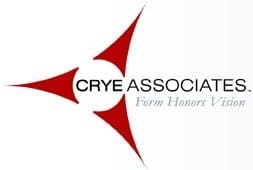 What’s important to you is that it’s where Crye Associates made their bones and many staples of modern Soldier Systems spun out from that program. Working in conjunction with other firms such as Juggernaut Defense and Artisent (which spun off Ops-Core) as well as large contract system integrators, Crye was responsible for the clothing, load bearing and armor components of this Soldier Digitization effort.
What’s important to you is that it’s where Crye Associates made their bones and many staples of modern Soldier Systems spun out from that program. Working in conjunction with other firms such as Juggernaut Defense and Artisent (which spun off Ops-Core) as well as large contract system integrators, Crye was responsible for the clothing, load bearing and armor components of this Soldier Digitization effort.
As with most of these programs, lots of money is poured into the software and comms portion and relatively little effort and funding is put towed the clothing and individual equipment components. With many of these programs, actual development of the system’s digital operating environment becomes virtual and during program reviews and Congressional dog and pony shows, Crye’s efforts became the face of the program. They produced prototypes that a Soldier could wear and that looked unlike anything else out there. I’d say that they kept that program moving for as long as it did. The clothing and armor developed by Crye was something you could actually see and lay your hands on, Eventually, after a name change to Future Force Warrior and facing actual combat in multiple theaters, the Army let the project drift away with the C4I component transitioning over time to Nett Warrior.
Industrial Design house Crye Associates founded Crye Precision based on the success of their work on FFW and after commercialization, caught the eye of the Special Operations community. The rest you should know.
Ultimately, four critical Soldier Systems technologies find their roots in FFW and with Crye:
MultiCam Camouflage Pattern – It began life as Scorpion for use with FFW but Crye Precision refined the pattern for commercial use and later provided modified variants of the pattern for both the UK (Multi Terrain Pattern) and Australia (Australian MultiCam Pattern). In 2009, the US Army selected MultiCam for use in Afghanistan as the Operation Enduring Freedom Camouflage Pattern (OCP). In 2010, Crye Precision developed Woodland and Arid patterns for the US Army’s Camouflage Improvement Effort. They were selected as finalists along with three other companies. In late 2013, Crye Precision introduced four new patterns to complement the decade old Transitional pattern: Alpine, Arid, Black and Tropical.
Combat Uniforms – The concept of producing a shirt that combines a moisture wicking torso with heavy duty sleeves for wear with armor systems was unheard of prior to OFW. The same goes for garments with integrated knee and elbow protection. Now, these concepts are accepted as state of the art.
Crye Armor Chassis – Crye Precision’s armor chassis took an entirely fresh approach to body armor, combining special, ergonomically shaped armor plates in such a way that allowed movement. It has been adopted for use by niche forces and up has influenced armor design.
Close Fitting Modular Combat Helmets – While the material science wasn’t quite there yet when the OFW/FFW helmet demonstrators were built, several companies produced enhanced combat helmets over the years including Crye Precision’s AirFrame that fits very close to the contour of the head.
ID Magazine did a great article on Crye’s participation in the project which we offer here for historical purposes.
This post was originally published on Jan 30, 2014 as “Objective Force Warrior? What’s That?“


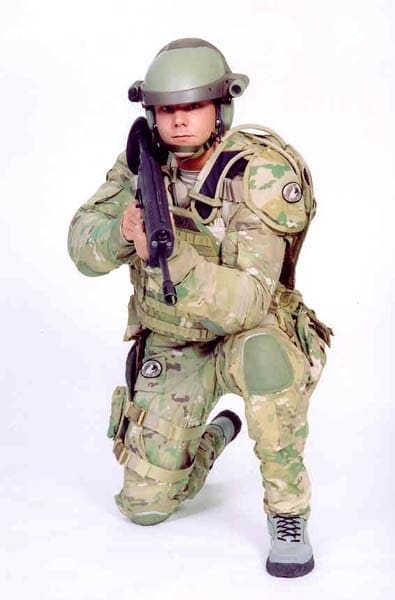
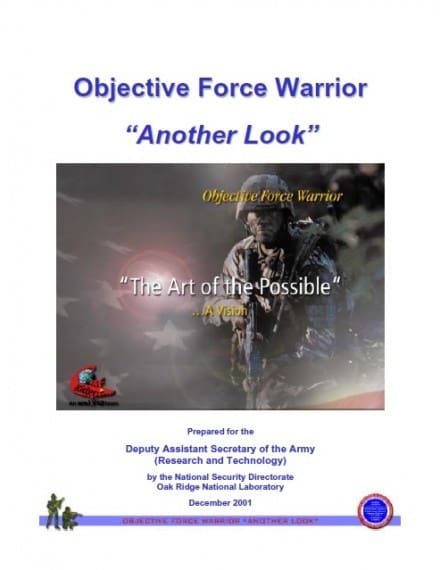
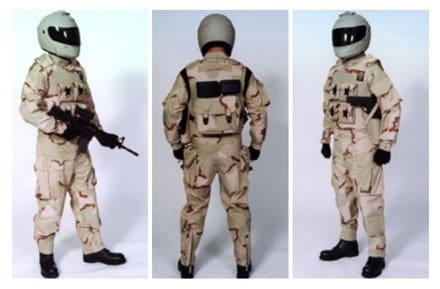
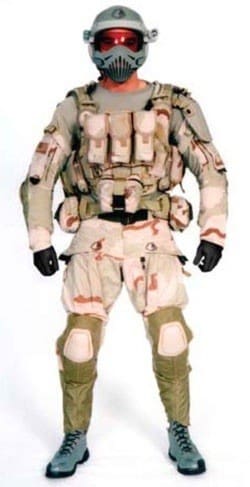
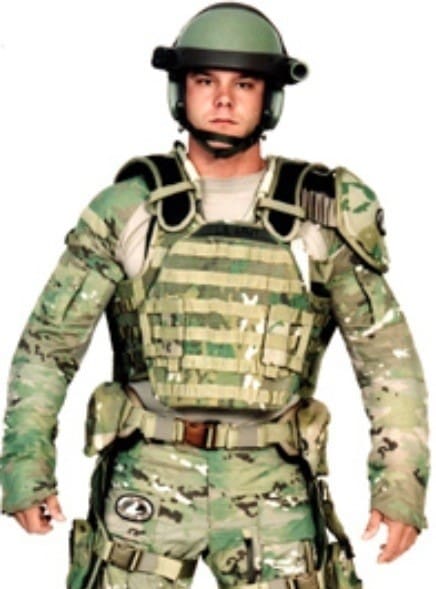
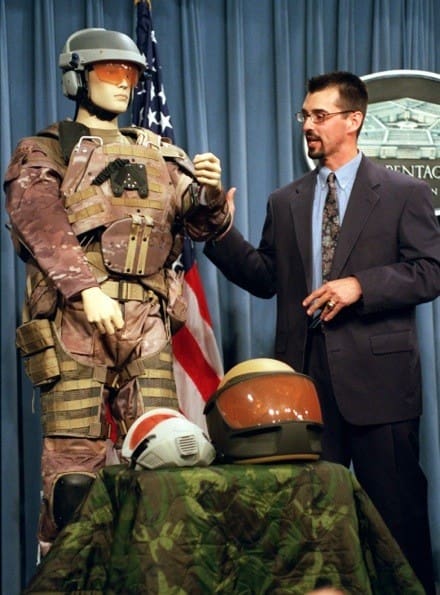
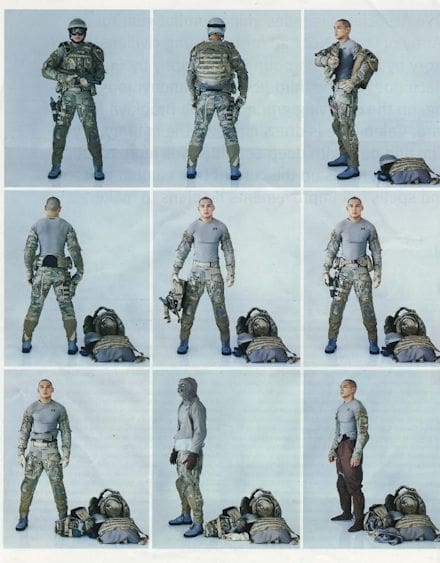
Here’s the best side-by-side comparison of Scorpion and MultiCam I’ve found:
http://www.hyperstealth.com/scorpion/index.html
Thanks SSD for the flashback. I remember these programs well.
One piece of kit that never got adopted was a spring loaded magazine carrier made of some composite plastic.
You inserted the magazine into the carrier from the top (flat, curve towards you) and pulled from the bottom. (Think of the old school change machines street vendors wore on their waist.)
The beauty of it was you didn’t need a dump bag.
Remember it?
So, Scorpion has really obnoxious green velcro on it, and Multicam has coyote brown velco?
Other than that, sure looks about the same to me.
Yes, very similar. I hope you understand that the new OCP implementation of Scorpion will not incorporate green Velcro?
I have multicam in my closet from my Afghanistan tour and honestly, I do not see a difference at all. You say potato and I say potatoe. I guess the digitized version was scrapped.
There is. You just got to look harder and know what to look for.
+1. Once you know what to look for it is really easy to tell the difference. For me it is anyway.
I can see every SGM and above getting a class on how to tell the difference and running joes down if they were a Multicam pattern anything.
I see what you are saying, I see two main differences between Scorpion and Multicam.
1) Scorpion is less cluttered than Multicam, it has less of the smaller ‘spots’ and more of the large ‘blotches’ under the ‘spots’ that are there.
2) Scorpion seems to use more brown/tan or a darker shade of brown/tan than Multicam.
Honestly, I think that I like Scorpion better, and had it been production ready, I would understand the decision better. But given that it is years out and it is so similar to Multicam, I don’t see why they did not go with Multicam. Multicam already being in the pipeline and tooled up is a value enough, not even counting the extra costs necessary to bring Scorpion on line.
Scorpion will cost industry money to get into production, Multicam would cost Army money to license. Of course Army is going to pass the pain to industry whenever possible.
I’m glad they went with something better than the current crap digital pattern.
I don’t understand why they balked at what ends up being $50 per soldier to buy Multicam. Already in production, a bit better than Scorpion.
If Army looked at how much OCP/Multicam we (soldiers) had in our lockers and closets already, it it probably much more than $25 million worth of gear.
The Army uses a planning factor of around 1.1 million to account for total force. Can’t forget Guard and Reserve.
Believe me, industry will pass the cost on to the Army.
I like it, it’s similar to Multicam, and in addition they kept with the rules that were set before them by congress. At least this time they may be able to keep the camouflage around for a little while longer, rather than hear from the boys on the front line that it doesn’t work.
I was wondering what are the fall backs to them selecting scorpion instead of multicam? They seem so similar and yet I know that just the slightest change on the color wheel can mean so much…why is multicam so effective where the scorpion falls short?
Sounds like it is official
http://www.military.com/daily-news/2014/05/23/army-selects-new-camouflage-pattern.html?comp=1198882887570&rank=2
What’s the difference between scorpion and scorpion w2 that is being reported?
When you can’t really tell the difference between multicam and scorpion without looking at a couple of yards what difference does it really matter? The pattern was modified slightly around 2009 to update it. The Scorpion being adopted isn’t exactly the same as what was used in 03-04. Next, some work is being done in the IR spectrum based on what we’ve learned over the past 10 years to bring it up to date.
Thanks for the IR work clarification. Given the age of the pattern that was one of my concerns due to past discussions seen here on SSD.
That’s interesting. I am assuming all the pictures we have seen of Scorpion so far are 03-04 era? In which case very few have actually seen the updated version. There is hope.
I don’t think I have any clear photos of the W2 variant
I remember seeing in in 03-04 as an effort t advance plate carriers, body armor mobility and uniforms. @SSD on thing I want to point out.. people were in the field cutting sleeves off blouses and placing them on coyote tshirts or underarmour before this program. The shops noticed and started looking for a solution of guys sweating so much their blouses always were hard from dried salt.. Crye had some to do with the shirt but the guys on the ground invited it!
… j/s..
And there is a Woodland woobie in the picture. Haha. Love my woobie.
W
So basically it’s what the ERDL or “Leaf” pattern was to Woodland?
That’s an analogy. Specifically, I feel Scorpion and MultiCam or closer tho.
Its nice to see that the rank insignia is moved over the right name tape instead of keeping it in the middle of the chest.
Those photos are from the early 00s. That program is long dead.
Anyone know why its called Scorpion? Camo names usually have to do with the actual pattern like woodland, tiger stripe etc
The pattern name came from the ensemble it was created for.